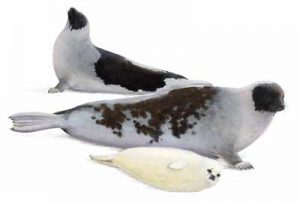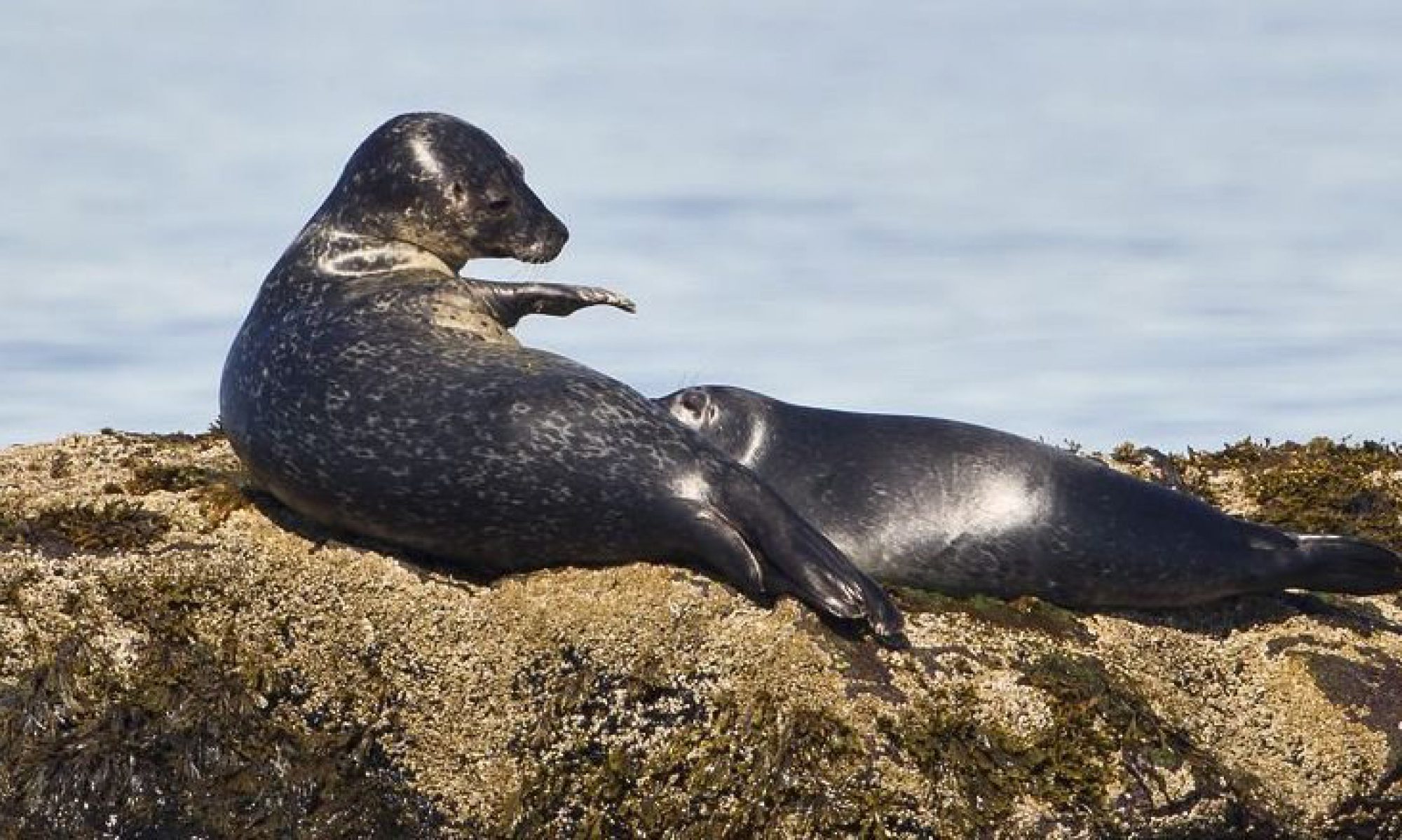
Harp seal (Phoca groenlandica)
During the summer months, the harp seal is a common visitor to Iceland’s north shore, Húnaflói area included. These seals are very social and travel together in big groups, especially when sea ice is close to the shore. The harp seal is similar to the harbour seal in size but very different in colour. Young seals are grey with black spots but adults are mottled white and black, with a black head and a black scut.
From February to March the females give birth to one pup out on the sea ice. They do not pup around Iceland but young seals and pups often get caught in fishing nets.
Harp seals mainly feed on capelin, baitfish and herring. In Icelandic waters, they mostly eat baitfish, codfish, capelin, shrimp, squid and other small sea animals.
There are three large harp seal stocks found in the North Atlantic Ocean, residing in the Barents Sea, Icelandic Sea (north of Jan Mayen) and around Newfoundland. Those that visit Iceland are most likely of the Jan Mayen stock.
Long ago, the harp seal was hunted in great quantities by Norwegians, Russians and Canadians. The hunting has since dramatically decreased, mainly due to shrinkage of the sealskin market. The global harp seal stock is now estimated between 9–10 million animals.
Recently, more harp seal sightings have been reported around Iceland than in the last 25 years, although those numbers are nothing compared to the harp seal’s so-called “invasion” in the great sea ice years in the 19th and 20th century, when sea ice spread along the west, north, and east coasts of Iceland.

